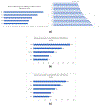Pregnancy-Associated Acute Kidney Injury in Low-Resource Settings: Progress Over the Last Decade
- PMID: 37011566
- PMCID: PMC10986622
- DOI: 10.1016/j.semnephrol.2023.151317
Pregnancy-Associated Acute Kidney Injury in Low-Resource Settings: Progress Over the Last Decade
Abstract
Despite immense global effort, the maternal mortality rate in low-resource settings remains unacceptably high. Globally, this reflects the grave inequalities in access to health and reproductive services. Pregnancy-associated acute kidney injury (PRAKI) is an independent risk factor for mortality. The reported incidence of PRAKI in low- and middle-income countries is higher than that of high-income countries (4%-26% versus 1%-2.8%, respectively). Hypertensive disorders are now the leading cause of PRAKI in many regions, followed by hemorrhage and sepsis. PRAKI in low-resource settings carries a high mortality for both mother and child. Outcome studies suggest that PRAKI is associated with residual kidney dysfunction and may lead to dialysis dependence. This can be a death sentence in many regions with limited kidney replacement therapy. This review will summarize data on PRAKI on the African, Latin American, and Asian continents over the past decade. It will include the progress in published data, mortality, and treatment interventions and provide recommendations for the next decade.
Keywords: Pregnancy; acute kidney injury; hypertension in pregnancy; low- and middle-income countries; neonatal outcomes; resource challenges.
Copyright © 2023 Elsevier Inc. All rights reserved.
Conflict of interest statement
Conflict of interest statement: Bianca Davidson, Divya Bajpai, Erika Jones, Nicola Wearne, Perditer Okyere, Ramnika Gumber, and Nikhil Saxena have no disclosures and competing interests. The results presented in this paper have not been published previously in whole or part thereof.
Figures



References
-
- WHO. Maternal mortality Accessed May 2022. https://www.who.int/news-room/fact-sheets/detail/maternal-mortality
-
- WHO. Trends in Maternal Mortality: 2000 to 2017: Estimates by WHO, UNICEF, UNFPA, World Bank Group and United Nations Population Divisions World Health Organisation; 2019.
Publication types
MeSH terms
Grants and funding
LinkOut - more resources
Full Text Sources
Medical
Miscellaneous

